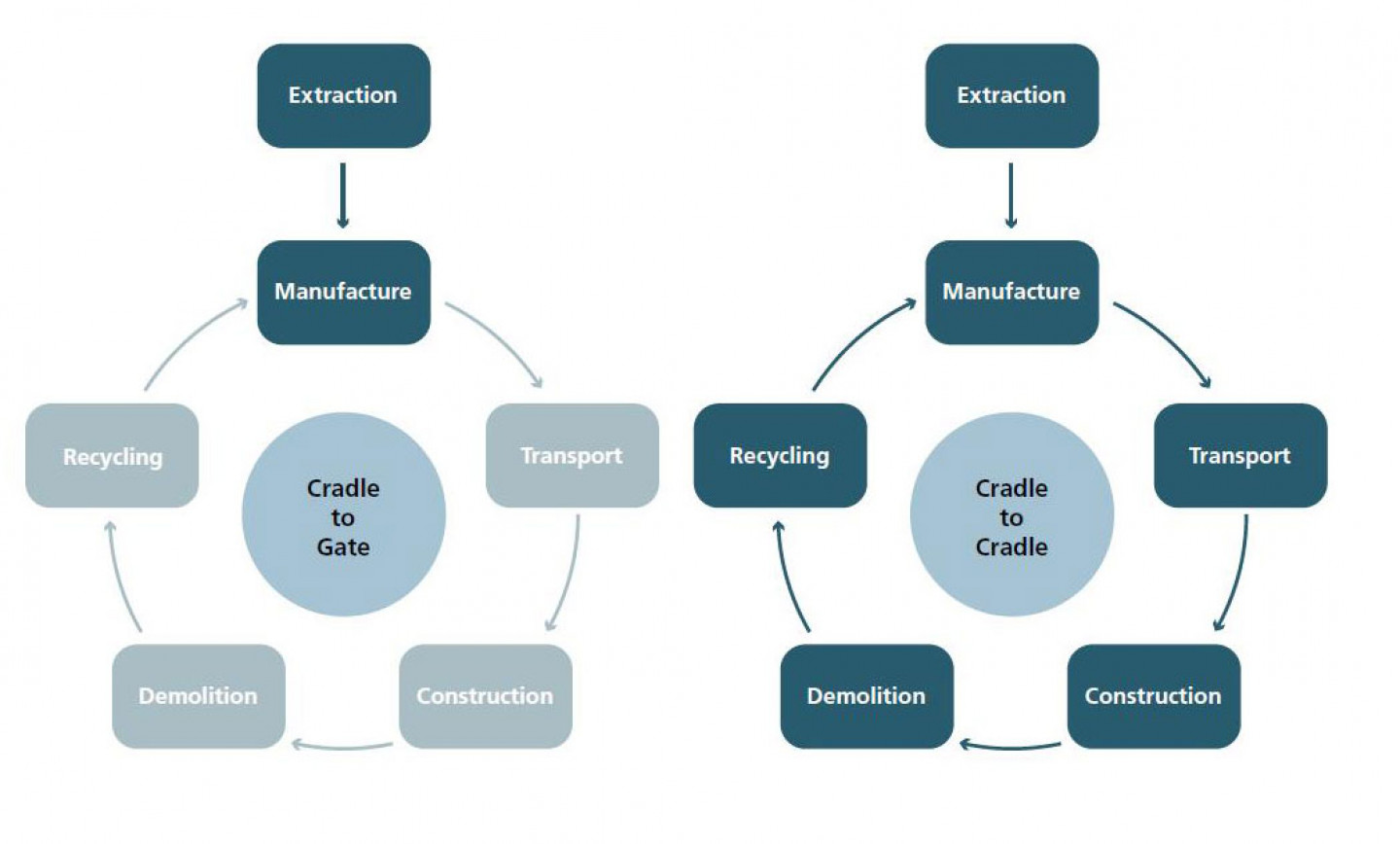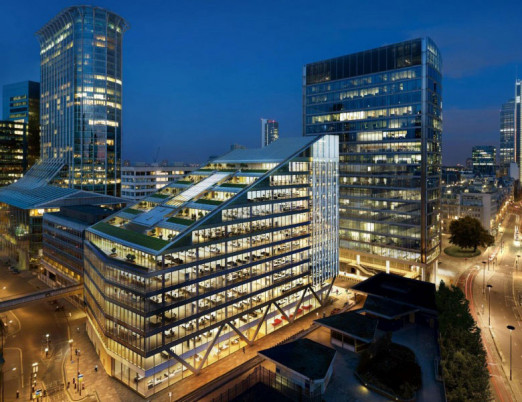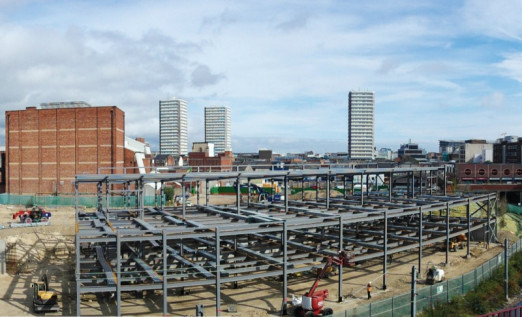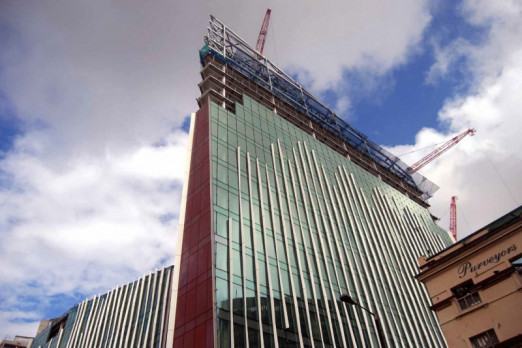Efforts to reduce operational carbon in buildings means that embodied carbon is increasingly important.
The drive to reduce greenhouse gas emissions is generating significant improvements in new and existing building performance. As operational carbon emissions reduce, embodied carbon emissions are become more important.
Embodied carbon refers to the greenhouse gas emissions that occur during the manufacture of construction products. The definition can also include any emissions that occur during the construction process itself, the operational lifetime of the building and the end of life disposal of the materials.
This is sometimes referred to as the cradle to (factory) gate option, the cradle to (installation) site option, or the cradle-to-cradle option, the latter of which is also known often as the whole life approach.
The steel industry promotes the whole life approach to embodied carbon calculation. Only this cradle-to-cradle method will give you an holistic understanding of the lifetime impacts of construction materials. The other methods fail to do this.
The strength of a cradle-to-gate approach to embodied carbon calculation has in the past been that information has been readily available for most materials. The quality of that data may be questionable on occasion but its saving grace is that it has been there.
The weaknesses however are significant because the cradle-to-gate approach assumes that all materials are more or less equal at end of life. So, recycling is deemed to be the same as landfill and a material that leaves a detrimental legacy when it comes to the end of its useful life is considered to be the same as one that leaves a positive impact.
The strength of a cradle-to-cradle approach is that it does not assume that all end of life outcomes are equal and that positive outcomes at end of life, such as recycling are rewarded and negative outcomes, such as landfill, are penalised. In the past, the weakness of this approach has been a lack of whole life data, but that has now been remedied. The steel, concrete and timber industries have all put their houses in order and produced good, reliable end of life data.
To help the construction industry navigate its way through the process of embodied carbon calculation, Tata Steel and the British Constructional Steelwork Association have published a guide on the subject, as part of their series of steel construction guidance publications.
A must read for the entire construction industry, the guide explains what embodied carbon is and how it impacts on the total emissions of a building throughout its lifecycle.
The guide gives designers an overview of how embodied carbon should be considered and calculated, some practical guidance on how to assess it on individual projects, and the significance of end of life impacts, while some case studies show how structural steelwork compares with other framing materials.
The guide is available for download at
www.steelconstruction.info/Steel_construction_news
Help for multi-storey designers
A web tool that enables designers of multi-storey buildings to easily estimate the embodied carbon footprint of the superstructure has been developed and is available for download at www.steelconstruction.info/Design_software_and_tools
Designers can use the tool in two ways. In ‘auto-generate’ mode, the basic building geometry, structural grid and chosen floor system are used to estimate structural material quantities using algorithms developed by the Steel Construction Institute (SCI).
Alternatively, a user may use the ‘manual input’ mode to enter the actual material quantities for the building. To compare the impact of a steel-framed building with a concrete framed building; the web tool should be run separately for each building.
Embodied carbon data
|
Product |
BS EN 15804 Modules |
Total (kgCO2e/kg) |
||
|
A1-A3 (kgCO2e/kg) |
C1-C4 (kgCO2e/kg) |
D (kgCO2e/kg) |
||
|
Brickwork |
0.16 |
0.01 |
-0.0207 |
0.15 |
|
Concrete Blockwork |
0.09 |
0.0103 |
-0.0053 |
0.10 |
|
C40 concrete |
0.13 |
0.0043 |
-0.0053 |
0.13 |
|
C50 concrete |
0.17 |
0.0037 |
-0.0053 |
0.17 |
|
Lightweight C40 concrete |
0.17 |
0.0111 |
-0.0053 |
0.18 |
|
Hollowcore slab |
0.2 |
0.0006 |
-0.0103 |
0.19 |
|
Hot-rolled plate and structural sections* |
1.735 |
0.06 |
-0.959 |
0.84 |
|
Hot-formed structural hollow sections* |
2.49 |
0.06 |
-1.38 |
1.17 |
|
Reinforcing steel |
1.27 |
0.061 |
-0.426 |
0.91 |
|
Steel deck |
2.52 |
0.06 |
-1.45 |
1.13 |
*Fabrication (bending, cutting and welding for rebar) impacts have not been included
BS EN 15804 provides rules to assist with the consistent calculation of embodied carbon, and divides the lifetime of a construction product into modules: A, B,C & D, some of which are further sub-divided. So for example, modules A1-A3 cover the production stage (cradle to gate) and modules A4-A5 cover the construction stage. For most construction products, A4-A5 are relatively small and are often ignored. The B modules cover the operational stage of the lifecycle, but these are also generally small and are ignored. Modules C1-C4 cover the demolition, separation and removal processes, and module D takes account of the positive or negative impacts of recycling, reuse or disposal to landfill. Adding these together as shown gives a cradle to cradle total.
Test showed that less carbon was produced as a result of the decision to use a steel frame on One Kingdom Street in London.






.jpg)

